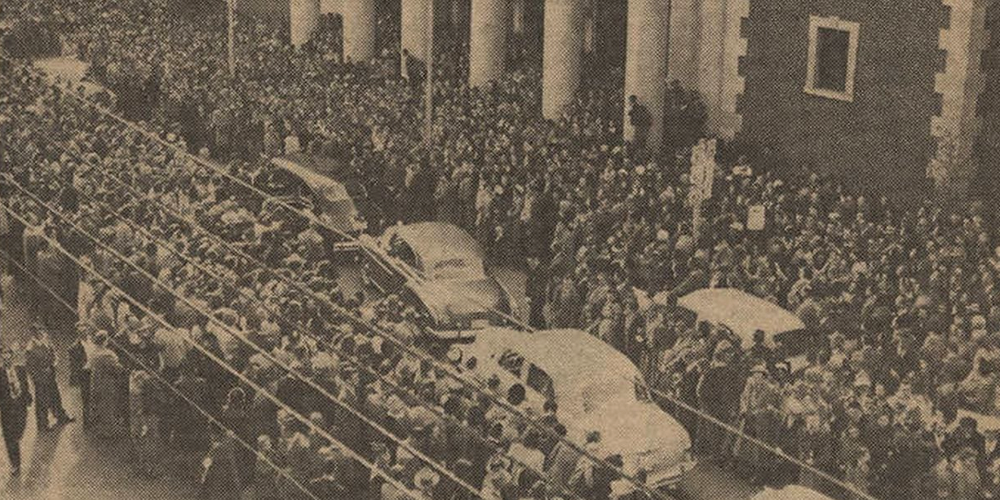In the quiet moments just before sunrise on January 1, 1953, a sleek, baby-blue Cadillac gracefully pulled into a gas station in Oak Hill, West Virginia. In the backseat rested Hank Williams, seemingly lifeless and unresponsive for several hours.
The celebrated country music maestro had been slated to grace the stage at the Municipal Auditorium in Charleston, West Virginia, for an eagerly anticipated performance. However, an unexpected ice storm forced the cancellation of the event. Faced with this predicament, Williams enlisted the help of Charles Carr, a college freshman on his Christmas break, to take the wheel. Their destination: the New Year’s Day concert at the Canton Memorial Auditorium in Canton, Ohio.
As the journey unfolded, Williams’s health took a downturn. Opting to address his discomfort, the duo made a pit stop at the Andrew Johnson Hotel in Knoxville, Tennessee. Carr sought the assistance of a local doctor to attend to Williams. The “I’m So Lonesome I Could Cry” crooner received two shots of vitamin B12 infused with morphine.
Sadly, the combination of alcohol and morphine proved fatal, preventing Williams from reaching his next destination. He succumbed to a heart attack, his body paralyzed by the lethal mix of drugs and alcohol.
Montgomery Funeral drew 20,000 Mourners

Approximately 20,000 mourners gathered at Hank Williams’ funeral at the Municipal Auditorium in Montgomery, Alabama. Iconic figures in country music, including Ernest Tubb, Red Foley, and Roy Acuff, paid their respects by serenading the audience with a heartfelt rendition of “I Saw The Light.”
Growing Sadness And Substance Abuse Pervaded Hank Williams’ Last Years
Hank Williams’ Final Years Marred by Deepening Despair and Substance Dependency. Amidst the backdrop of World War II, Hank Williams shuttled between Mobile and Montgomery, dividing his time between laboring in a shipyard and pursuing his musical aspirations. It was during this period that Williams turned to alcohol as a means to alleviate the relentless back pain stemming from a congenital spinal disorder.
As the years unfolded, his reliance on morphine and alcohol extended beyond mere pain relief, becoming a coping mechanism for both physical agony and the emotional turmoil of a tumultuous relationship. Little did Williams realize that this dependency would transform into a relentless specter, haunting him until his premature demise.
Despite the shadows that marred his final years, Hank Williams’ enduring legacy lives on through his poignant songs.






